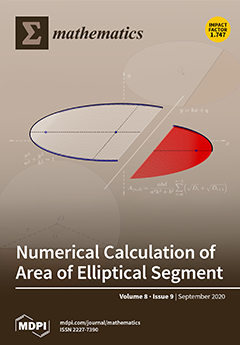COVID-19, known as Coronavirus disease 2019, is caused by a coronavirus called SARS-CoV-2. As coronavirus restrictions ease and cause changes to social and business activities around the world, and in the United States in particular, including social distancing, reopening states, reopening schools, and
[...] Read more.
COVID-19, known as Coronavirus disease 2019, is caused by a coronavirus called SARS-CoV-2. As coronavirus restrictions ease and cause changes to social and business activities around the world, and in the United States in particular, including social distancing, reopening states, reopening schools, and the face mask mandates, COVID-19 outbreaks are on the rise in many states across the United States and several other countries around the world. The United States recorded more than 1.9 million new infections in July, which is nearly 36 percent of the more than 5.4 million cases reported nationwide since the pandemic began, including more than 170,000 deaths from the disease, according to data from Johns Hopkins University as of 16 August 2020. In April 2020, the author of this paper presented a model to estimate the number of deaths related to COVID-19, which assumed that there would be no significant change in the COVID-19 restrictions and guidelines in the coming days. This paper, which presents the evolved version of the previous model published in April, discusses a new explicit mathematical model that considers the time-dependent effects of various pandemic restrictions and changes related to COVID-19, such as reopening states, social distancing, reopening schools, and face mask mandates in communities, along with a set of selected indicators, including the COVID-19 recovered cases and daily new cases. We analyzed and compared the modeling results to two recent models based on several model selection criteria. The model could predict the death toll related to the COVID-19 virus in the United States and worldwide based on the data available from Worldometer. The results show the proposed model fit the data significantly better for the United States and worldwide COVID-19 data that were available on 16 August 2020. The results show very encouraging predictability that reflected the time-dependent effects of various pandemic restrictions for the proposed model. The proposed model predicted that the total number of U.S. deaths could reach 208,375 by 1 October 2020, with a possible range of approximately 199,265 to 217,480 deaths based on data available on 16 August 2020. The model also projected that the death toll could reach 233,840 by 1 November 2020, with a possible range of 220,170 to 247,500 American deaths. The modeling result could serve as a baseline to help decision-makers to create a scientific framework to quantify their guidelines related to COVID-19 affairs. The model predicted that the death toll worldwide related to COVID-19 virus could reach 977,625 by 1 October 2020, with a possible range of approximately 910,820 to 1,044,430 deaths worldwide based on data available on 16 August 2020. It also predicted that the global death toll would reach nearly 1,131,000 by 1 November 2020, with a possible range of 1,030,765 to 1,231,175 deaths. The proposed model also predicted that the global death toll could reach 1.47 million deaths worldwide as a result of the SARS CoV-2 coronavirus that causes COVID-19. We plan to apply or refine the proposed model in the near future to further study the COVID-19 death tolls for India and Brazil, where the two countries currently have the second and third highest total COVID-19 cases after the United States.
Full article





